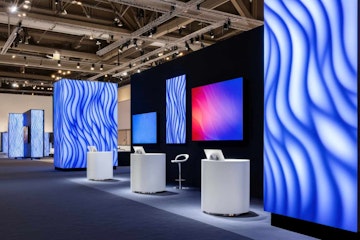When you think of a brand you truly love - not just one you follow out of obligation or habit, but one that feels like it speaks to you - there’s a good chance that the first thing that comes to mind is a colour.
Tiffany Blue. Coca-Cola Red. Barbie Pink. Brat Green, for the Gen Z folk. These colours don’t exist in a vacuum, and they certainly weren’t picked out of thin air. They carry emotional weight, cultural associations, and years of strategic repetition. They’re part of the brand’s identity in the same way a scent can bring back a memory you didn’t realise you were holding onto.
So the question becomes: how do you choose the right colours for your brand, especially if you’re not working with a huge marketing team or a Coca Cola budget? How do you make choices that are not only visually appealing, but also purposeful, and most importantly, consistent?
Let’s break that down.
Why Colour Actually Matters
There’s a tendency to treat colour like decoration. Something you layer on at the end once the “real work” is done. But the truth is, colour does a lot of the heavy lifting when it comes to first impressions. In fact, colour influences emotion faster than language. People will instinctively form opinions about your brand’s tone, professionalism, and trustworthiness within seconds of seeing it - and most of that initial judgement is visual.
According to multiple studies (and some common sense), colour can increase brand recognition by as much as 80 percent. That’s not marketing fluff. That’s a reflection of how the human brain works. We remember feelings. And colour shapes feeling.
If your branding feels “off” but you can’t quite put your finger on why, there’s a good chance your colour palette is clashing with the emotion you’re trying to create.
Begin With Brand Personality
You might like sage green. You might be obsessed with mustard yellow. But the real question isn’t what you like, it’s what makes sense for your brand’s voice, tone, and position in the market. Colour is part of communication. It signals to your audience whether they’re in the right place or not.
A wellness brand promising calm and clarity has no business using the same colours as a high-octane tech startup. Likewise, if you’re positioning your business as luxurious, elegant, and high-end, you’re not going to get very far with bright primaries or overly saturated neons. It’s not snobbery, it’s strategy.
Start by defining how you want your brand to feel. Confident? Experimental? Grounded? Then look at colours that support those feelings. It helps to gather visual references: not just brand palettes you admire, but actual environments, artworks, or campaigns that make you feel the way you want your audience to feel.
Use Colour Psychology Lightly, Not as a Rulebook
Colour psychology gets talked about a lot, and while it can be useful, it’s not as rigid as it’s often made out to be. Yes, red is commonly associated with urgency, passion, or energy, and blue tends to evoke calmness or trust. But these associations aren’t universal, and more importantly, they’re not fixed.
Cultural context matters. So does how a colour is paired with others. A rich navy might feel traditional and corporate in one setting but incredibly modern and sleek when combined with off-white and copper accents. Pink might seem youthful or unserious to one audience, but entirely chic and mature to another, especially if the execution is minimalist and tonal.
Rather than sticking to some internet-approved colour emotion chart, think about how your palette actually functions in real-life applications. Does it reflect your values? Does it feel dated or fresh? Is it versatile enough to evolve with your business, or does it feel too trend-driven to last?
Create a Palette That Works Everywhere, Not Just on Paper

Your colour palette shouldn’t just look good on a mood board. It needs to work across digital and physical touchpoints, from Instagram grids and product packaging to exhibition stands and signage. A good test is to mock up a few realistic examples and see how your colours perform across different formats. Are they still legible? Do they clash with imagery? Can you maintain consistency without everything feeling repetitive?
Ideally, your palette should include:
One or two primary brand colours that dominate
A couple of supporting tones that offer flexibility
Neutral tones that help balance everything out
An accent colour, used sparingly for emphasis or calls to action
Think about contrast, legibility, and brand cohesion. If you can’t easily imagine your colours working on a printed flyer, a mobile website, and a lightweight display tool for expos, something needs adjusting.
Consistency Over Cleverness Every Time
One of the most common mistakes people make is constantly switching up their colours in the name of creativity. We get it. Sticking to the same shades can feel boring after a while. But from your audience’s perspective, that consistency is what builds trust. It’s what creates familiarity. It’s how you go from “just another business” to a brand that feels established and reliable.
The most iconic brands in the world became iconic because they didn’t mess around with their colours. They made a choice, repeated it everywhere, and stuck with it long enough for it to matter.
This applies doubly if you’re designing real-world materials like brochures, exhibition signage, or printed collateral. Your brand colours should already feel recognisable before someone walks past your booth - and if they don’t, it might be worth revisiting your visual identity from the ground up. You can find some ideas for designing the perfect display stand that align with your brand colours over on our website.
Don’t Forget About Accessibility
There’s no point in having a beautiful colour palette if your text is unreadable or your buttons are invisible. Accessibility - while also being a legal requirement - should be thought of as a design principle that improves the experience for everyone.
Our Take
Choosing brand colours is less about chasing trends, copying competitors, or picking something just because it “looks cool.” It’s more about making deliberate, thoughtful decisions that align with who you are, who you serve, and how you want to be remembered.
You don’t have to be a design expert to get it right, but you do need to care enough to be consistent, intentional, and open to testing what works. If you treat your colour choices as an integral part of your brand strategy rather than a decorative extra, you’ll be miles ahead of most businesses out there.
And who knows - maybe one day, someone will think of your brand the second they see your signature shade in the wild.








